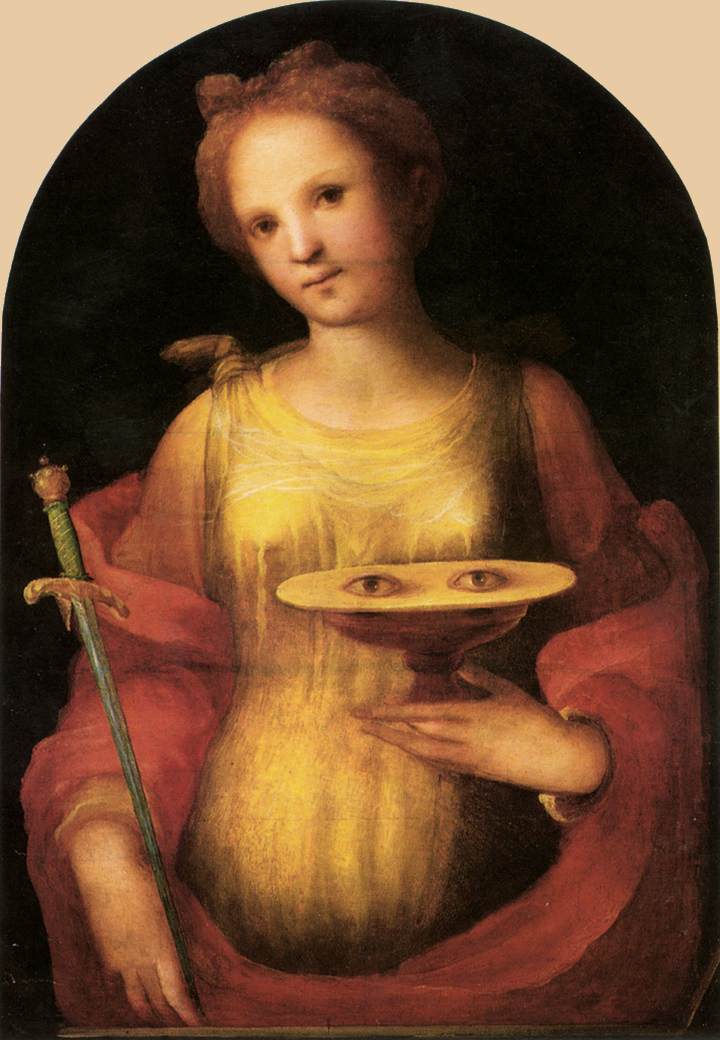The glass shattered. A hand grabbed into the showcase and pulled at the motionless body. The head, hidden inside a silver mask, came off and was left in the glass cabinet. The rest of the body was stuffed into a plastic bag before the two criminals left hastily the church of San Geremia.
It was the 7th November 1981 when the relics of Saint Lucy from Syracuse were stolen. More than 30 days passed until on the 13th December, the day when Saint Lucy is commemorated, the head of the investigation announced that they found her body in the lagoon of Montiron.
Gianfranco Tiozzo. That was the name of the man accused of the theft. It was rumoured that the mafia association “Mala del Brenta” that operated between Venice and Padua and was smashed in the 90ies, was involved too in this crime. After one year Tiozzo was freed as there weren’t enough proofs for his involvement.
Saint Lucy didn’t only have an eventful life, but also after-life.
As you can deduce by her name, she originally came from Syracuse in Sicily. She was the daughter of a distinguished Roman family, but very early she converted to Christian faith … secretly. This was during the high time of persecution of Christians and thus she told no one about it, not even her family.
When her mother fell sick, Lucy took her to Catania to the tomb of Saint Agatha. A miracle healed her mother and Saint Agatha appeared to Lucy in her dream predicting her she would die a martyr’s death. Her mother permitted her after the miracle to stay unmarried and so her betrothal was dissolved.
Lucy used her money to found a place for the poor and the sick and brought persecuted Christians food to their hideouts. To keep her hands free, in order to carry more food, she wore a crown with lights on her head. (That is very fitting, as Lucy is also called the light-bearer. Her name “Lucia” comes from the Latin “lux”, light.)

Why is she depicted in art with a pair of eyes on a plate?
Lucy was denounced by her nearly husband to the governor, taken captive and according to tradition dragged to death by an oxcart, soused with boiling oil and her eyes strapped from her. Others say she plucked them out herself.
She probably died in the year 304 or 310, on the 13th December. This is the reason why we still commemorate her on this very same day.
How did Lucy arrive in Venice?
Lucy came around a lot after her death.
In 1039 Giorgio Maniace, a Byzantine general, stole her body from Syracuse and brought it to Constantinople: A gift for the empress Theodora.
With the 4th crusade Lucy came to Venice together with the Doge Enrico Dandolo. This happened in 1204.
Lucy now found peace on the island of San Giorgio Maggiore until she was brought to a church dedicated to her, sitting right on the Grand Canal, in Cannaregio. (It is not a coincidence that the train station is called “Santa Lucia”!) When the church was destroyed to make space for the train station, her relics were moved to the close-by church of San Geremia in the end of the 19th century. There she is resting in peace ever since with the exception of the theft in 1981.
Lucia, the Santa Claus … well, Misses Claus
In the first December days children got ready: They would write a letter to Saint Lucy begging her for gifts. (Reminding you of someone, isn’t it?)
Lucy then visited the good children in night of the 12th December, but not on a sledge, but on the back of a donkey bringing them the gifts to unpack in the morning of the 13th. (Still reminding you of a special someone in red clothes, isn’t it?)














